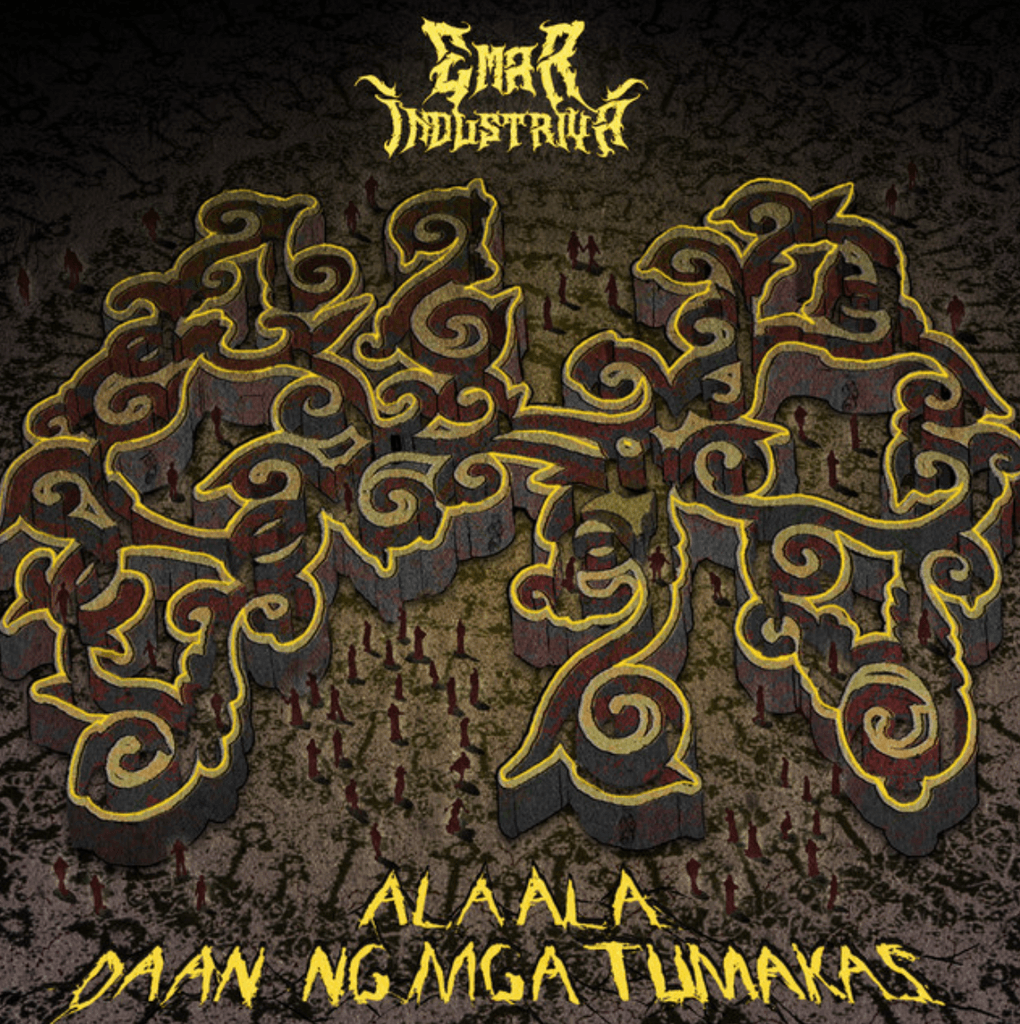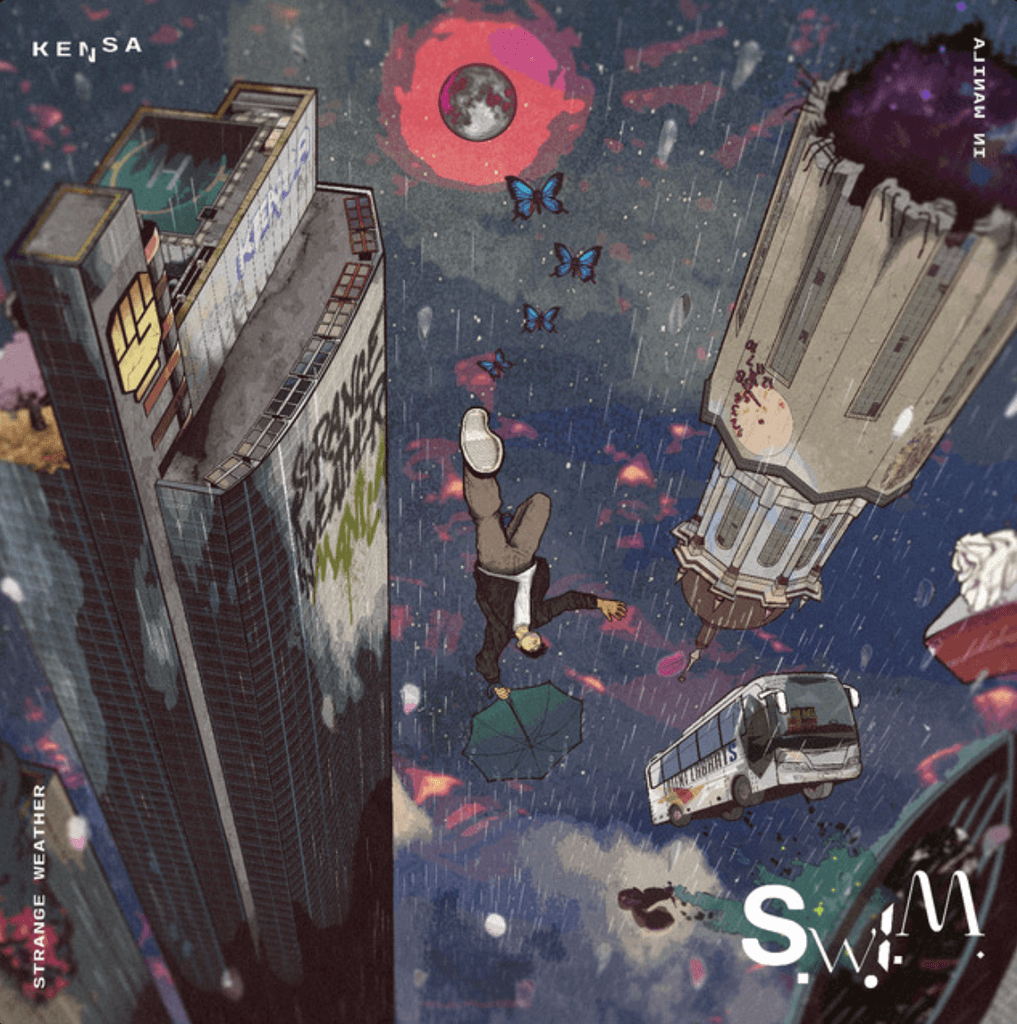SUMMARY
This is AI generated summarization, which may have errors. For context, always refer to the full article.

Uprising Records – home to some of the country’s most lauded emcees and beat whizzes – marked their tenth year in the biz last November through a triple-header launch. Their self-styled “true-school hip-hop” roster may not boast of household names, but that’s really more our loss than theirs. We belatedly sound off on all three records below.
Apoc the Death Architect: Kampilan

Of the many hills Apoc will valiantly die on, it’s his identification as scribe that’s top-of-mind. There is an oft-cited 2018 battle with Tipsy D that even he remains enamored with (he says so in a recent Reddit AMA), where he disgustedly dissociates himself from his opponent by saying, “Writer ako, battler ka lang,” and later claiming, “Lasing ako sa hip-hop / Ikaw, tipsy ka lang.”
Now, that self-characterization may not be Apoc’s alone, but in his sophomore release Kampilan, this very blueprint resurfaces. And it’s taken on more details along the way. In these songs, he’s still scribe, for sure, but now he’s also minstrel, clown, and pariah.
The battler in him obviously makes for a huge chunk of Apoc’s DNA, and in Kampilan, the divide between life-fueled art and art-fueled life is effectively blurred. Obviously, there’s a lot of pre-thinking and pre-writing that goes into those FlipTop meets – it’s part-sorcery, part-laboratory work – and I feel like Kampilan is both a distillation of what’s already gone down and a playbook for what’s yet to come.
Regardless of tense, matters of fact or fiction, or questions of projection or reportage, Kampilan is ultimately tethered to rap battling. It alludes to opponents; it paints a not-always-flattering portrait of the culture; it bemoans different tragedies (most evidently, perhaps, in the razor-lipped diatribe “Bulalakaw”). But because of his courage in displaying vulnerability (“Nasan Ba ang Tapang Ko,” “Talambuhay”) – admitting to feelings that would otherwise un-card him in this hallowed fraternity of rhymesters – Apoc is lifting the veil on the caricature, so to speak.
Kampilan is sonically diverse, too. There is an undercurrent of metal and industrial in the more introspective material (“Samot-Sari,” “Di Mo Ko Mapapasunod”), but also minstrelsy levity in the others (the showtune-worthy jaunt “Lunes Na Naman,” the sticky-as-glue Thyro collab “SLMN”).
The larger arc is periodically punctuated by small helpings of spoken-word – the anti-macho skits “OG Boss D” and “Mr. Manly” are easy standouts – that invariably lead to bombast-heavy numbers (the war-on-drugs romp “Gang Gang,” the quirky Jekyll-and-Hyde smasher “Magpakalalake Ka”). With 19 tracks in its fold, Kampilan does scream Big Gesture, but it is in various moments of smallness that it shines.
This smallness is central to Apoc’s Kampilan persona – a persona that holds water, I’d hazard a guess, in his day-to-day, too – of being an outcast, of being othered and bothered, of being a square peg in a round hole. And he leans into these sentiments like draft items in a manifesto-in-progress; the admonition “Ang maging iba ay tunay na kapangyarihan” (“Ekskomunikado”) and the self-flagellating decisiveness of “Ako’y komportable sa pagiging hindi komportable” (“Hindi Komportable”) are clear testaments to this.
If Kampilan were Apoc’s kampilan (or blade of choice) in this ruthless, ruthless world, it’s clear how he intends to leave the field: not with things razed to the ground, but with demons ambling and bleeding out, oblivious to the thorns on their side.
Emar Industriya: Alaala: Daan ng mga Tumakas

I have to say this outright: I’m a tourist to these shores and, well, acquainting myself with the work of Emar Industriya has provided a real cold-water-dowse schooling. Despite his relative newness, his horrorcore stylings have already become legendary, and watching him destroy battle-rap opponents has become a guilty pleasure.
And I only say “guilty pleasure” because I feel – whenever I gush at the man’s sharp, ingenious rhymes – like an accessory to the grisliness he pledges to lay at the feet of his foes. His machine-gun cadence is a key ingredient in this potent vat: a guttural barrage that doesn’t let up, taking only fleeting breaths to reload and restructure.
The more visceral pleasure, however, lies in consuming his studio work, where you can put both his craft and philosophy under a microlens. In Alaala: Daan ng Mga Tumakas, his second full-length, the hostility is intact, but it’s no longer against a fellow rhyme-smith in front of an easily-amused and often-bemused crowd; it is against the cruelty of life itself.
In these songs, Emar Industriya is shadowboxing with a Goliath that can’t be easily felled; he’s sparring with his own restless mind. And what a mind it is: chockfull of mystery, misery, and most importantly, metaphor.
It’s in the propulsive drumming of “Pinaalala” and its portrayal of the betrayal of a people (“Kinultura ang aking sibika”); in the groove-laden bars of “Kapanganakan” and its painful paean to self-realization (“Walang hanging tumutulak sa aking paglalayag […] Sarili kong libro ay aking mundo”; in the sinister atonal droning of “Kasalukuyang Memorya” and its dilettante dichotomies (“Nagbungkal hindi para maghanap […] Nagbungkal kundi para maglagay”).
Emar identifies as a scribe, too, for sure. But the stronger strain in his lyricism is not so much autobiography but antipathy. Things need saying, wrongs need righting, and all these incongruencies are making him restless. That restlessness is triumphantly conveyed in Alaala, thanks in no small measure to a production language that allows him to just be.
The stop-and-go rhythms and the atypical soundscapes lay down much of the foundation of Alaala, and often, one finds Emar charging, not seething; destroying, not chipping away at stones; killing, not wasting a second on petty brawls.
When you listen to numbers like “Ebolusyon ng Parirala” and “Talukap ng Panorama,” the man sounds decisive and deliberate with his declaratives, probably because he is decisive and deliberate with his declaratives. On top of that, in these rhymes, the staggering phonemes of the Filipino language are with palpable teeth.
He’s no cheap yarn-spinner, this guy. He’s a shaman in plainclothes.
Kensa: Strange Weather in Manila

Lucena-based beatmaker Kensa is a tough nut to crack. And I only say that because my lukewarm reception to the first half of Strange Weather in Manila was easily countered by the auditory delights offered by the rest of it.
For sure, Kensa’s got production matters down pat; with his already-storied grasp of beat-making one automatically expects the record to be of a certain sonic caliber. And that’s the true virtue of this release: how the songs are like different sorts of studio candy. Good studio candy.
But candy can’t all be that good for you.
While his melody-based, sing-song-enabled, ‘90s-flavored productions are a joy to consume – they harken to a period in hip-hop that didn’t take itself too seriously, in a cultural landscape that favored furrowed-brow earnestness – I have a nagging feeling they’re deficient in nourishing qualities.
The lyrical content of much of the opening half isn’t staggeringly thought-provoking. And I agree that it doesn’t have to be, except that this particular half assumes gestures of thought and poses of rhetoric, while being lathered in thick, thick vats of dressing.
“Never considered myself an artist / That is the habit of narcissists,” Kensa proclaims in “Above the Clouds,” a bombast-projecting tune tossed with unwieldy word salad and pitchy chorus breaks.
“I don’t think y’all ready for this,” he says off-handedly in “Metamorphosis,” and I want to confirm he’s right, except I’m not so sure that’s a good thing.
The didactic overtones of “Eye of the Storm” – “an ode to mankind, to the downtrodden and exasperated, the helpless” – do little to undo its crimes against show-don’t-tell.
But lest I get harangued with charges of convenient cherry-picking, let me say this: it would be disingenuous to skip over the fun parts of Strange Weather. Truth be told, Kensa is best enjoyed when he rhymes about relationships and freestyles about everyday things that tick him off. He’s buoyant in these songs – the fun-having is so potent you stop minding the bits that are off-key – and it’s clear that he plays well with others.
“Freefall” (with QUERUBIN) and “Color of Love” (with Feifei, Soupherb, Sak Maestro, and DJ Arthug) are laced with RnB gold. Mood pieces “Cherry Blossoms” (with Rayneman and Soupherb) and “Reaching Outerspace” (again with Soupherb) are transportive tunes that boast of compelling beats and infectious flows. However, it is in all-star number “Theos” where spunk takes centerstage, with a byline populated by a veritable honor roll, to boot: Plazma, BagongBata, Anygma, BLKD, KJah, Tatz Maven, Apoc, Batas, Goriong Talas, Kemikal Ali, DJ Arthug, Redrum, Ilaya, Kregga, Sak Maestro, and Emar Industriya.
Strange Weather is net-net enjoyable, but mostly when it’s having fun. It’s an ornate web of head-bobbing beats and memorable hooks, but I’m undecided whether the potency of these can shield the loosey-goosey verses tucked within. – Rappler.com
Add a comment
How does this make you feel?
There are no comments yet. Add your comment to start the conversation.